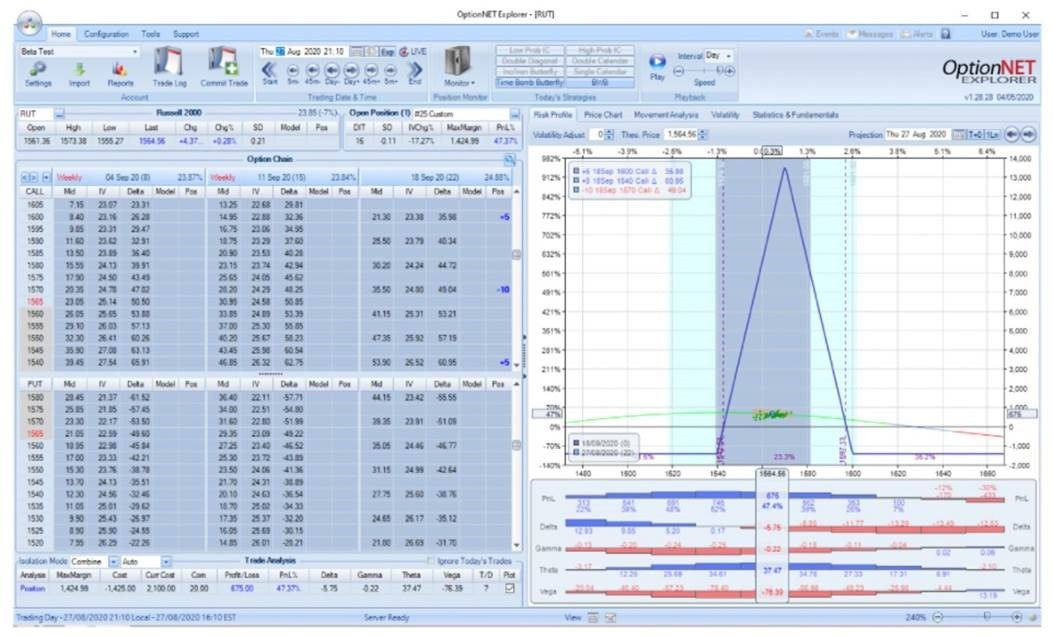Original work? Protecting graphical user interfaces
A graphical user interface (GUI) comprises visual elements through which a user interacts with software.
In this case, the GUI was for trading software (OptionNET Explorer) developed by Mr Mitchell (and owned by THJ Systems Limited), which showed risk and price charts for various options, including stock options. The GUI was developed in part using pre-existing component parts obtained from a third-party library to generate the desired appearance. The software, and therefore the GUI, was used by Mr Sheridan without authorisation.
Copyright may be applicable to GUIs as artistic works given their visual format. Artistic works are defined by Section 4 of the Copyright, Designs and Patents Act 1988, which indicates that graphic works may be protectable subject matter “irrespective of artistic quality”, while Section 1 requires that the work must be “original”.
In the first instance, the owner of the copyright for a computer-generated work is the person by whom the arrangements necessary for the creation of the work are undertaken.

Defendant’s arguments
As can be seen in the image (shown above) the GUI has a somewhat functional appearance, in which data is shown in a variety of formats for consideration by the user. It was therefore argued that this was not an intellectual creation subject to copyright protection at all, as it was a simple display of data.
To the extent that any copyright did exist in respect of the GUI, it was argued that the user would be the person to whom the copyright belonged, as they select the data which is used to generate the display. This selection was suggested as being the arrangement necessary for the creation of the work, and accordingly the user would be the author. It therefore follows that if there were any copyright associated with Mr Sheridan’s use of the software he would be the owner of that copyright, and therefore no infringement was possible.
Claimant’s arguments
Mr Mitchell argued that, as the developer of the software, he was the designer of the image, on the basis of the fact that he is the one who chose visual features such as line types, colours, transparencies, layouts, and font types.
Regarding the use of pre-existing components, it was submitted that the components were used as “tools” in the same way that a painter would use paint and a brush, with reference also being made by the cross-examiner to “putting Lego bricks together created by someone else”. In other words, while the components were pre-existing it was the specific implementation and arrangement of these that led to the GUI in question.
The judgment
In determining whether the GUI was the intellectual creation of Mr Mitchell, the criterion of “what is required is that the author was able to express their creative abilities in the production of the work by making free and creative choices so as to stamp the work created with their personal touch” was considered.
This criterion was considered to be met as the judge was satisfied that designing the interface was sufficiently skilled and involved to allow it to be considered an artistic work. It was considered clear that care had been taken in determining the layout; the ability to represent a large amount of information on a single screen was an indicator of this.
A further point that was considered was that the overall look of the interface was defined by the arrangement of elements, rather than being dictated by the specific data that was shown. This further supported the idea that Mr Mitchell was the author of the work, and not the user of the software.
In view of these factors, the judge concluded that the GUI was an artistic work of which Mr Mitchell was the author, and that copyright did subsist in this work.
Conclusion
The main takeaway from this case is that a GUI that utilises a number of pre-existing components in its design can still be protected as an original work, as the arrangement of these may be enough to qualify the resulting GUI as an original artistic work.
However, the scope of protection can be narrow where the interface is considered to lack sufficiently creative input.
Case details at a glance
Jurisdiction: England & Wales
Decision level: Court of Appeal (Civil Division)
Parties: THJ Systems Limited & Ors v Daniel Sheridan & Ors
Citation: [2023] EWCA Civ 1354
Date: 20 November 2023
Useful link
Section 4: Artistic Works, Copyright, Designs and Patents Act 1988: dycip.com/cdpa-artistic-work

